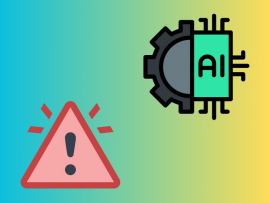Excellent user experience (UX) design doesn’t come from guesswork—it’s built on data. While creativity and intuition are essential, designing digital products that truly connect with users requires a clear understanding of how people interact with your platform. That’s where analytics comes in. In today’s digital landscape, data-driven UX design has become a key strategy for creating interfaces that are not only visually appealing but also functional, user-friendly, and aligned with user behavior. Here's how analytics shapes better UX—and how to use it effectively. 1. Understanding Real User Behavior One of the most significant advantages of analytics is observing how users interact with your product—not how you think they do. Tools like Google Analytics, Hotjar, and Mixpanel can show you: Which pages users visit most (and least) Where users drop off in a process (like checkout) What devices do they use How long they stay on a page Where they click, scroll, or get stuck This kind of data is gold for UX designers. It highlights friction points, confusing layouts, and features that might not work as intended. 2. Validating Design Decisions Instead of relying on assumptions, data helps validate design choices. For example, say you redesign your homepage CTA (call to action) button to be more prominent. With analytics, you can track whether click-through rates increased after the change. If not, you can compare the results with a different layout,..
Read MoreIn today’s fast-paced digital world, mobile payment apps have become a core part of how consumers shop, send money, and manage their finances. However, as the demand for these apps grows, so do user expectations. People want payment apps that are not only secure, functional but also intuitive, fast, and enjoyable to use. This is where user-centric design comes in—a vital approach that puts the needs, preferences, and behavior of the user at the heart of the development process. 1. What Is User-Centric Design? User-centric design (UCD) is a philosophy focused on creating solutions that provide the best possible experience for the end user. It involves understanding user goals, pain points, and behaviors through research, testing, and continuous feedback. In the context of mobile payment apps, this means designing every element—from login screens to transaction flows—with the user in mind. 2. Why It Matters in Mobile Payments Mobile payment apps handle sensitive financial transactions, so users must feel confident and comfortable navigating them. If the interface is confusing or the process feels clunky, users are likely to abandon the app altogether. UCD helps ensure the app is easy to understand, smooth to use, and delivers a frictionless experience. An app built around user needs is more likely to gain trust, reduce transaction errors, and encourage repeat use. Whether paying a friend, checking a balance, or making a purchase, the user..
Read MoreIn today’s digital age, cyberattacks are an inevitable risk for organizations of all sizes. While prevention is essential, having a robust Incident Response Plan (IRP) in place is equally critical. This plan ensures that your team can quickly identify, contain, and mitigate the effects of a security incident, minimizing damage and swiftly restoring normal operations. Here’s a step-by-step guide on how to create a comprehensive Incident Response Plan. 1. Understand the Importance of an Incident Response Plan An Incident Response Plan is a structured approach to handling security breaches or cyberattacks. It outlines the procedures and best practices your organization should follow when responding to security incidents. Having an IRP ensures that the response is swift, organized, and practical, helping your team recover quickly. 2. Define What Constitutes an Incident Not all cybersecurity events are critical enough to trigger a complete response. Therefore, defining what constitutes a security incident within your organization is essential. An incident can range from a data breach or malware attack to more advanced threats like ransomware. Classifying incidents based on severity allows for a more tailored and effective response. 3. Assemble Your Incident Response Team The effectiveness of an IRP depends heavily on the team executing it. Your Incident Response Team (IRT) should comprise key stakeholders from different departments, including IT, legal, compliance, communications, and management. Each member should have clearly defined roles and responsibilities..
Read MoreIn today’s interconnected world, cyber resilience has become a key priority for businesses, especially when managing the supply chain. Supply chains increasingly rely on digital systems, creating new vulnerabilities to cyber threats. A single breach can disrupt operations, damage reputations, and lead to financial losses. Therefore, ensuring cyber resilience within the supply chain—the ability to withstand and recover from cyberattacks—is essential for maintaining business continuity and securing sensitive data. Here's how organizations can prepare for cyber threats in the supply chain. 1. Conduct a Comprehensive Risk Assessment The first step toward achieving cyber resilience in the supply chain is conducting a thorough risk assessment. Organizations must identify all potential vulnerabilities in their supply chain, including digital and physical risks. This involves mapping out all suppliers, vendors, and partners, assessing their cybersecurity measures, and evaluating how a breach in one part of the supply chain could affect the whole system. By understanding the risks, businesses can better allocate resources and prioritize efforts to strengthen the areas most susceptible to cyber threats. 2. Establish Strong Cybersecurity Standards Across Partners Since supply chains often involve numerous third-party vendors, ensuring that cybersecurity standards are consistent across all parties is crucial. Businesses should require vendors and suppliers to meet specific cybersecurity criteria before establishing partnerships. This might include compliance with data protection regulations such as GDPR, adherence to industry-specific security standards like ISO 27001, and..
Read MoreIn an increasingly digital world, your identity isn’t just who you are—it’s your data, your logins, and your online presence. And it’s under constant threat. Cybercriminals continually develop new methods to steal personal information, commit fraud, or impersonate individuals online. Whether you're a business professional, student, or everyday user, protecting your digital identity is essential to safeguarding your privacy, finances, and reputation. 1. Use Strong, Unique Passwords Weak and reused passwords are one of the easiest ways hackers gain access to personal accounts. Use complex passwords with a mix of letters, numbers, and symbols—and avoid using the same password across multiple sites. Better yet, use a password manager to generate and securely store strong, unique passwords for each of your accounts. 2. Enable Two-Factor Authentication (2FA) Two-factor authentication adds an extra layer of protection by requiring something you know (your password) and something you have (like a code sent to your phone). Even if a hacker steals your password, 2FA can block them from accessing your account. 3. Beware of Phishing Scams Phishing remains one of the most common tactics used to steal credentials. Be cautious when clicking links or downloading attachments from emails, even if they appear to be from trusted sources. Be careful of misspellings, urgent language, and unfamiliar senders. When in doubt, go directly to the website rather than clicking on the email link. 4. Limit Personal..
Read MoreNo business ever wants to face a data breach—but in today’s threat landscape, the question isn’t if, but when. Whether caused by a cyberattack, human error, or a third-party vulnerability, a breach can lead to serious consequences, including financial loss, regulatory penalties, and damage to customer trust. The key to minimizing impact is a clear, timely response. Here’s what to do if your business experiences a data breach. 1. Contain the Breach Immediately The priority is to isolate the breach. Disconnect the affected systems from the network, deactivate the compromised accounts, and prevent unauthorized access. Avoid wiping or altering data until a proper investigation can begin—you don’t want to unintentionally destroy evidence. 2. Assess the Scope and Impact Determine what type of data was accessed and how the breach occurred. Was it customer information, financial records, or internal documents? Engage your IT team or an external cybersecurity firm to perform a forensic analysis. Understanding the extent of the breach is crucial for the next steps. 3. Notify Internal Stakeholders Communicate quickly with leadership, legal teams, IT, and other relevant departments. Clear internal communication ensures a coordinated and efficient response, minimizing panic and misinformation. 4. Follow Legal and Regulatory Requirements Depending on your location and industry, you may be legally required to notify regulators and affected individuals within a specific timeframe. For example, under GDPR and many state laws, breach notification..
Read MoreIn the ever-evolving world of cybersecurity, password protection alone is no longer enough to secure sensitive information. With cyberattacks becoming more sophisticated and data breaches increasingly common, organizations and individuals must embrace stronger security measures. One of the most effective ways to enhance security is to implement Multi-Factor Authentication (MFA). This layer of protection significantly reduces the chances of unauthorized access to systems and data. But why is MFA so important in strengthening security? Let’s dive into its role. What is Multi-Factor Authentication? Multi-Factor Authentication (MFA) is a security protocol requiring users to provide two or more verification factors to access an application, service, or system. Unlike traditional password-only methods, which rely solely on something the user knows, MFA combines three categories of factors: Something you know: A password or PIN. Something you have: A physical device like a smartphone or hardware token. Something you are: Biometric verification, such as fingerprints or facial recognition. By requiring at least two factors, MFA ensures that even if one factor (e.g., a password) is compromised, unauthorized access is still unlikely. Why is MFA Critical for Security? Mitigating Password Weaknesses Passwords, while essential, are often weak and easily compromised. Many people use simple passwords or reuse the same password across multiple accounts, making it easier for hackers to gain unauthorized access. MFA significantly reduces the impact of weak or stolen passwords by adding an..
Read MoreAs cyber threats become more sophisticated, organizations must adopt innovative approaches to safeguard their digital environments. Traditional security methods, such as firewalls and antivirus software, are often insufficient to combat the complexity of modern cyberattacks. That’s where Artificial Intelligence (AI) and Machine Learning (ML) come in. These advanced technologies provide robust solutions for detecting and responding to threats in real-time. Here's how AI and ML can be used for threat detection. 1. Identifying Anomalies in Real Time One of the core strengths of AI and ML is their ability to analyze vast amounts of data quickly and accurately. Machine learning algorithms are designed to learn from historical data and continuously improve their ability to detect patterns. By using this data, ML systems can identify what “normal” behavior looks like within a network and flag any anomalies. These anomalies could indicate a cyberattack, such as a data breach, unauthorized access attempt, or unusual network traffic. AI-driven systems can detect anomalies in real time, enabling a faster response to potential threats. This proactive approach reduces the time attackers have to cause damage before being detected. 2. Automating Threat Detection and Response AI and ML can significantly enhance the speed and efficiency of threat detection and response by automating many manual processes. For instance, traditional threat detection often involves a team of security analysts sifting through logs and data to spot suspicious activity...
Read More








